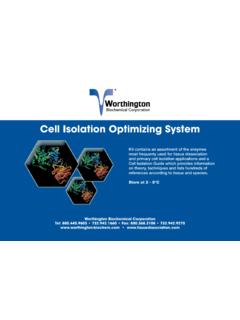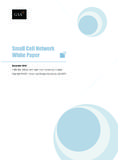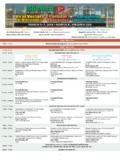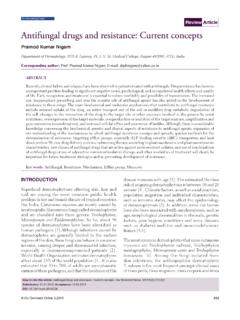Transcription of Section VIII Platelet Rich Plasma (PRP) Guidelines
1 International Cellular Medicine Society 2011 Section viii Platelet rich Plasma (PRP) Guidelines CHAPTER 1 HISTORICAL PERSPECTIVE The application of PRP has been documented in many fields. First promoted by M. Ferrari in 1987 (1) as an autologous transfusion component after an open heart operation to avoid homologous blood product transfusion, there are now over 5200 entries in the NCBI for PRP ranging in fields from orthopedics, sports medicine, dentistry, otolaryngology, neurosurgery, ophthalmology, urology, wound healing, cosmetic, cardiothoracic and maxillofacial surgery. The initial popularity of PRP grew from its promise as a safe and natural alternative to surgery. PRP advocates promoted the procedure as an organically based therapy that enabled healing through the use of one s own natural growth factors. In recent years, scientific research and technology has provided a new perspective on platelets.
2 Studies suggest that platelets contain an abundance of growth factors and cytokines that can affect inflammation, postoperative blood loss, infection, osteogenesis, wound, muscle tear and soft tissue healing. Research now shows that platelets also release many bioactive proteins responsible for attracting macrophages, mesenchymal stem cells and osteoblasts that not only promote removal of degenerated and necrotic tissue, but also enhance tissue regeneration and healing. Musculoskeletal practitioners began using PRP for tendinopathy in the early 1990s. These early practitioners were primarily trained in the use of prolotherapy. The popularity of PRP grew as physicians began to see clinical results in concentrating a patient s own blood factors. The PRP procedure is significantly more complex and requires additional equipment to perform successfully, but many practitioners have seen a relatively more robust response, fewer treatments and improved tissue health compared to prolotherapy.
3 The growth of PRP therapy has relied primarily on anecdotal or case reports. Historically, there have been few controlled trials to prove the efficacy of PRP. Of these existing trials, the sample sizes tended to be too small to allow for generalization of findings. Moreover, lack of concensus on technique, number of injections, spacing of injections, number of platelets, concentration of platelets over baseline, with or without leukocytes in the injection, exogenous activation of injected platelets and even a definition of appropriate candidates for the procedure are lacking and in need of further definition and evaluation. Recently, however, there has been an emerging literature on the beneficial effects of PRP for chronic non-healing tendon injuries including lateral epicondylosis, plantar fasciopathy and cartilage degeneration (2,3). International Cellular Medicine Society 2011 The current Guidelines will focus on general principles of PRP use and its applications specifically to musculoskeletal care.
4 Future sections will be added in reference to other fields such as dentistry, cosmetics, wound healing, etc. CHAPTER 2 DEFINITION AND PREPARATION CONSIDERATIONS By definition, PRP must contain a higher concentration of platelets than baseline, however an increase in platelets is a very gross description of PRP and does not accurately describe the variability among different types of PRP. There are several parameters that need to be taken into account when considering PRP, including: Platelet concentration above baseline, whether or not leucocytes are included, whether or not the PRP has been anticoagulated and whether it requires exogenous activation. Platelet count is the first variable to consider. Absolute Platelet count varies depending on the Platelet concentration in the subjects peripheral blood. PRP devices can be usually divided into lower ( - 3 times baseline concentration) and higher (5 9 times baseline concentration) systems.
5 It would seem intuitive that a higher Platelet count would yield more growth factors and better clinical results, however, this has not yet been determined. Graziani et al suggested that the optimal concentration of PRP was baseline and above this there may be an inhibitory effect (4). More research is needed. PRP containing white blood cells will have different biologic activity than PRP in which they are absent. The lower Platelet count systems separate the whole blood into two components: one with the cellular components and the other consists of serum in which the platelets are suspended. The higher Platelet count systems separate the whole blood into three fractions: the red cells, serum and buffy coat. The buffy coat contains both platelets and white blood cells (WBCs). WBC can be further classified into different types. These include neutrophils, monocytes/macrophages, and lymphocytes.
6 Their roles in tissue healing are different. Neutrophils are phagocytic and contain over 40 hydrolytic enzymes. Their activation leads to phagocytosis of debris and the release of oxygen free radicals and proteases. This release of toxic molecules from the neutrophils can lead to secondary damage to the muscle (5,6). Whether or not neutrophils have a negative or positive effect on acute or chronically injured soft tissue is unknown. Macrophages are the tissue form of the circulating monocytes. Their role is the removal of debris and they are primarily phagocytic. They also have a role in balancing the pro-inflammatory and anti-inflammatory aspects of healing (5,7) Since it is not possible to fractionate different types of white blood cells out of PRP, it may be that the absence of macrophages is more detrimental to International Cellular Medicine Society 2011 healing than any secondary damage inflicted by neutrophils.
7 More study is also needed in this area. When whole blood is drawn, many PRP kits will use an anti-coagulant to prevent it from clotting. Most kits use anticoagulant citrate dextrose (ACD) to inhibit clotting. ACD binds calcium and prevents the coagulation proteins from initiating the clotting cascade. The addition of citrate to the blood also makes it more acidic than is physiologic. Since some growth factors are influenced by the pH of the tissue, some protocols recommend buffering the PRP back to a physiologic range prior to injection. PRP is activated prior to injection is another parameter that requires further discussion. PRP can be activated exogenously by thrombin, calcium chloride or mechanical trauma. Once PRP is activated, a fibrin network begins to form, solidifying the Plasma and creating a fibrin clot or membrane. If PRP is activated too strongly, the fibrin network will be a bivalent, unstable network.
8 If it is activated in a more physiologic manner, a tetramolecular stable network forms that enhances enmeshment of cells and growth factors. (8) Although this can be useful for surgical procedures, it is undesirable to have the PRP overly viscous when injecting into soft tissue. Activation results in rapid growth factor release, with 90% of the prefabricated factors released in ten minutes. Many growth factors have short half-lives, so greatest effectiveness may result if they are activated at or just prior to injection. Variable half-lives of growth factors also creates a differential PRP make-up depending on how quickly after activation it is used. Most commercial PRP kits do not activate PRP. Some replace calcium that was bound by ACD to create a more physiological state. Employing unactivated PRP may result in a more normal physiologic activation by the injected tissue.
9 To avoid unintentional activation of platelets, most protocols use large bore needles (>22) to draw the blood and re-inject PRP. In addition, there are different centrifuge protocols with different spin speeds and times. Some centrifuges offer special braking mechanisms to prevent unintentional activation. The optimal regimen to prevent unintentional activation is unclear. Collagen is a natural activator of PRP, thus when PRP is used in soft tissue, it does not need to be exogenously activated. Once activation has occurred at the injection site, release of growth factors initiates an inflammatory response that lasts approximately 3 days (9). Fibroblasts accumulate at the site of injection, which marks the beginning of the proliferative phase of healing that lasts several weeks. After that, remodeling occurs to the collagen matrix that was laid down by the fibroblasts.
10 This remodeling phase that leads to the formation of mature tissue lasts about 6 months. It takes all three phases for new tissue to form and provide long-term stability to tissue (10). International Cellular Medicine Society 2011 CHAPTER 3 PHYSICIAN ACCREDITATION PRP injections should be performed by allopathic or osteopathic physicians with a valid license to practice medicine and surgery in the State in which they practice. Successfully and safely performing PRP procedures requires knowledge of the diagnosis, standard treatments, benefits, risks, contraindications, methods of preparation and delivering it to the appropriate patient in the appropriate situation. Physicians who perform PRP injections should be board certified according to ACGME standards and maintain appropriate overall and musculoskeletal specific continuing medical education credits.





